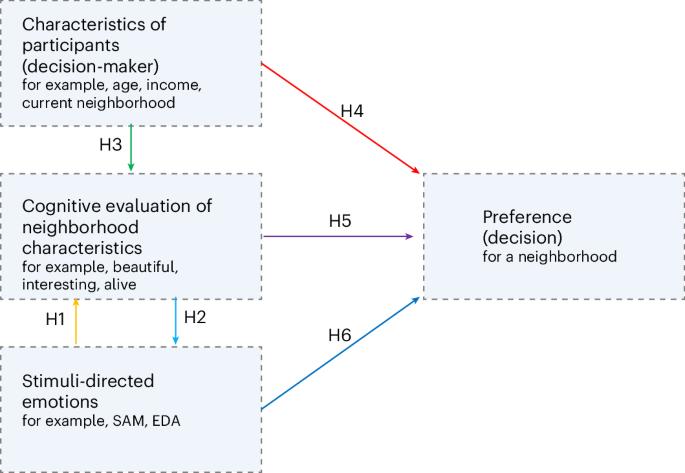Stimuli-directed emotions overrule cognitive evaluations in urban neighborhood preferences
引用次数: 0
Abstract
The rapid expansion of residential areas in cities’ surroundings is drastically changing the character of rural landscapes. This spread of low-density, discontinuous urban development brings with it important social and environmental challenges. Despite these issues, people continue to migrate to these often-named peri-urban areas, even though the migration of large numbers of people irreversibly transforms the very qualities that initially drew them into these spaces. This study contributes to the understanding of the role of cognitive and emotional factors in neighborhood preferences. Here, using cognitive psychology experiments with state-of-the-art immersive 360° stimuli simulations of neighborhood scenes, we reveal that preferences for peri-urban neighborhoods are significantly lower than for urban and rural environments. Notably, stimuli-directed emotional signals clearly supersede cognitive evaluations of neighborhood characteristics. These findings emphasize the need for aligning available housing options with individuals’ emotions to foster place attachment and encourage active community engagement in shaping their neighborhoods. As urbanization increases, people often flock to the outskirts of expanding cities. Using immersive simulations of neighborhoods, this study finds that people prefer such peri-urban neighborhoods less than rural or urban environments.

在城市邻里偏好中,刺激导向的情绪压倒了认知评价
城市周边住宅区的迅速扩张正在彻底改变农村景观的特征。这种低密度、不连续的城市发展带来了重要的社会和环境挑战。尽管存在这些问题,人们仍然继续迁移到这些通常被称为城郊地区,尽管大量人口的迁移不可逆转地改变了最初吸引他们进入这些空间的特质。本研究有助于理解认知和情感因素在邻里偏好中的作用。本研究利用认知心理学实验和最先进的沉浸式360°刺激模拟社区场景,揭示了人们对城市周边社区的偏好明显低于城市和农村环境。值得注意的是,刺激导向的情绪信号明显取代了对邻里特征的认知评估。这些发现强调了将可用的住房选择与个人情绪相结合的必要性,以培养地方依恋,并鼓励积极的社区参与塑造他们的社区。随着城市化进程的加快,人们往往涌向不断扩张的城市的郊区。通过对社区的沉浸式模拟,这项研究发现人们更喜欢这样的城市周边社区,而不是农村或城市环境。
本文章由计算机程序翻译,如有差异,请以英文原文为准。
求助全文
约1分钟内获得全文
求助全文

 求助内容:
求助内容: 应助结果提醒方式:
应助结果提醒方式:


